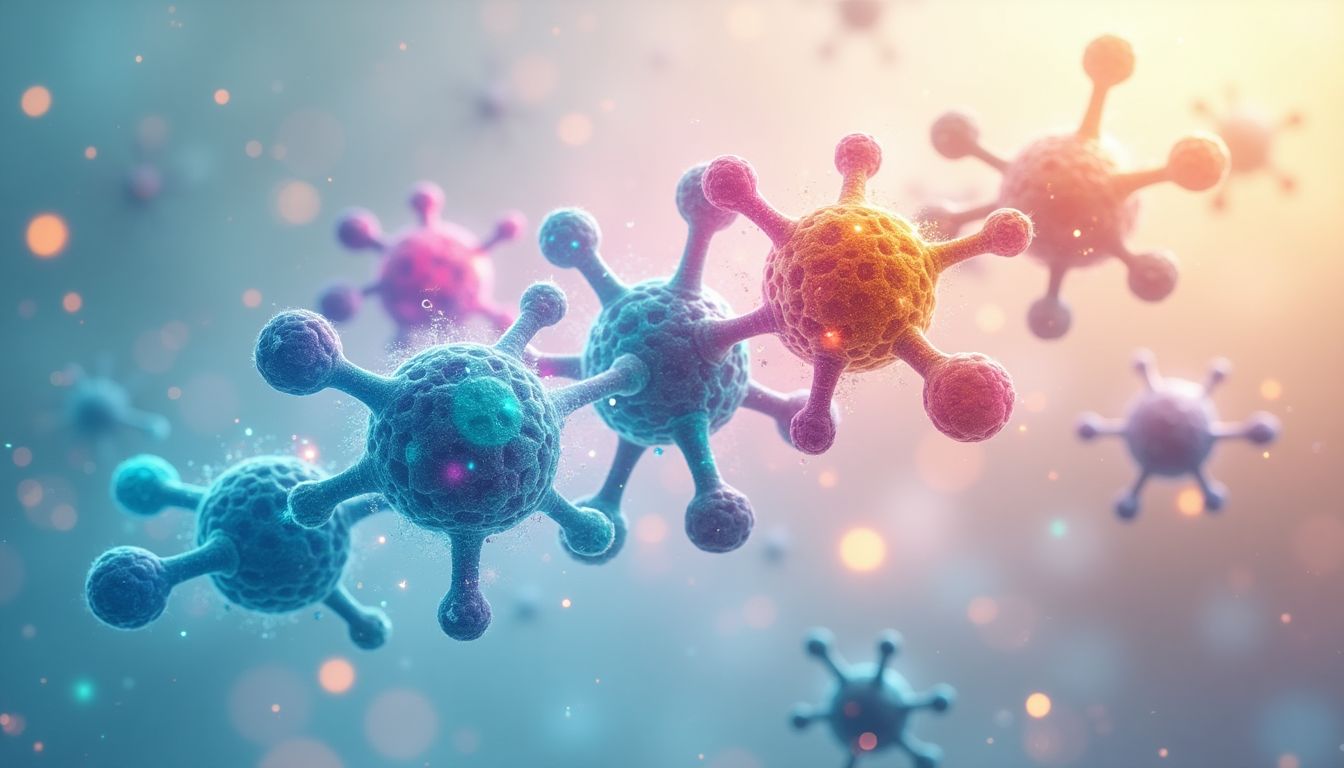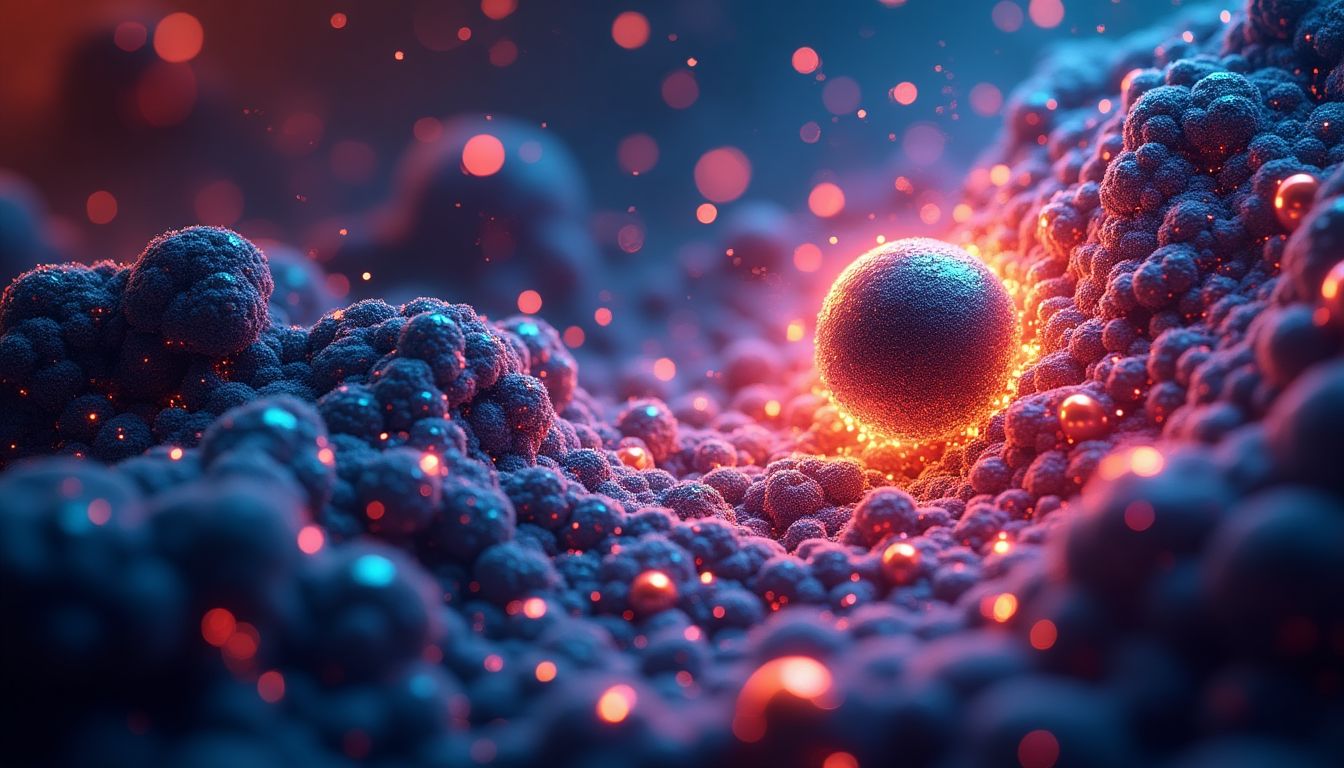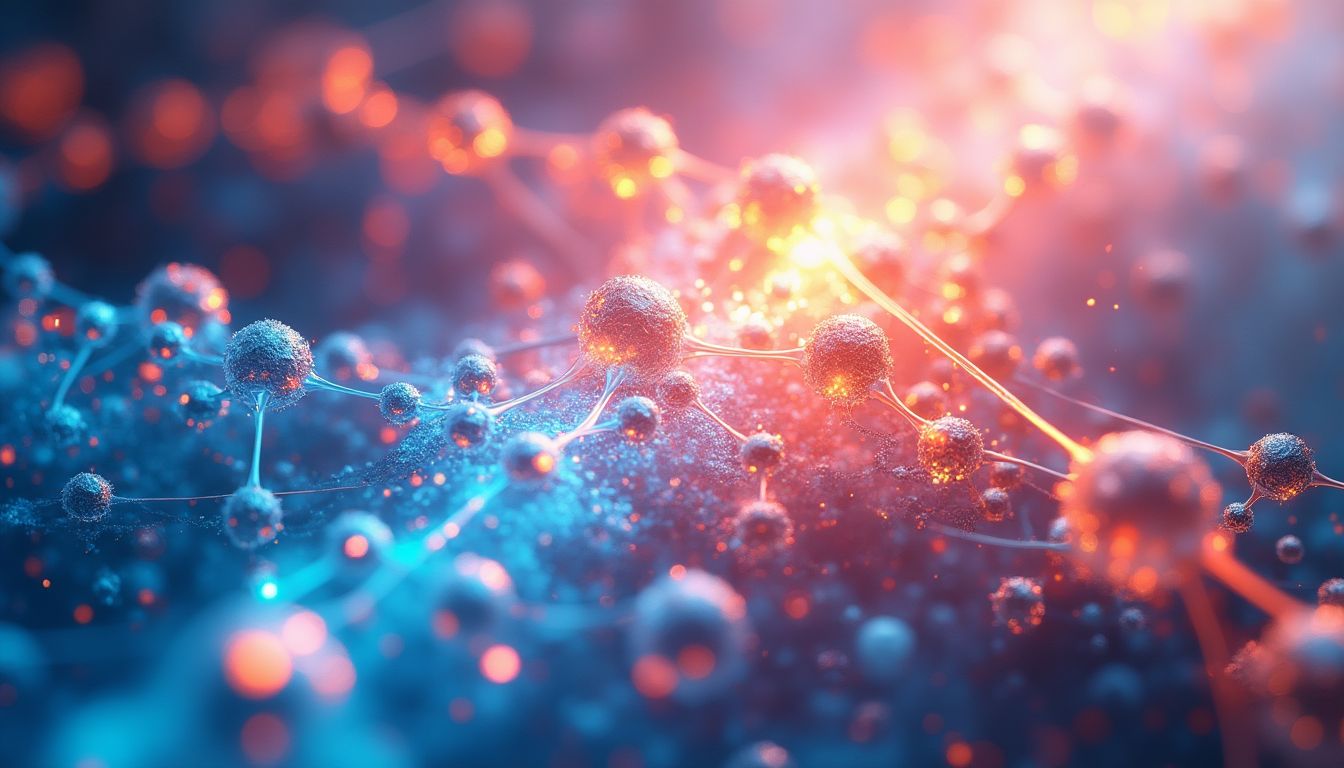Atoms don't lie—but they certainly keep secrets. Somewhere in the vast digital brains of artificial intelligence lies the key to unveiling not only the missing pieces of the periodic table but entirely new creations, elements engineered from scratch, with properties unlike anything currently known to science. The periodic table as Dmitri Mendeleev famously laid out in 1869 may still hold its scientific charm, but it’s stuck in the 19th century, while we are sprinting into the 21st. How do we fill those gaps and go beyond? Imagine AI, working at speeds that make Einstein’s thought experiments feel slow, revolutionizing our understanding of atomic behavior. Materials that once lived only in the pages of sci-fi novels—stronger alloys for space exploration, metals lighter than air, and even room-temperature superconductors—could soon leap out of simulation and into reality.
Artificial intelligence isn't just a passive assistant—it acts as a co-creator. Luminaries like Nobel laureate Frank Wilczek, bestselling author and physicist Michio Kaku, and chemist Frances Arnold, a pioneer of directed evolution, have all touched on the transformative potential of AI in reshaping fields like chemistry and physics. But it’s not just about understanding our current periodic limits—it’s about redefining them. If AI can predict and create synthetic chemicals to solve medicine's toughest challenges—think DeepMind’s AlphaFold cracking protein structure prediction—why can’t it do the same for the elements themselves?
This article dives into how artificial intelligence could uncover unknown elements, map the uncharted "islands of stability," and even dream up custom-built elements crafted to change life as we know it. Are you ready to rethink chemistry, AI, and, well, the building blocks of everything? Let’s explore.
1. The Current Periodic Table: A Century of Discovery
1.1. A Brief History of Element Discovery
The periodic table is often called the “chemist’s map,” a tool as essential to their craft as a telescope is to an astronomer. It wasn’t always this expansive. When Dmitri Mendeleev first dreamed it up in the 1860s, only 63 elements were known. His genius lay in spotting the gaps and boldly predicting the existence of as-yet-undiscovered elements based on the patterns he saw. Over time, these gaps were filled—gallium, germanium, and scandium, among others—proving Mendeleev’s intuitive brilliance. By the mid-20th century, the periodic table had expanded to include elements synthesized in laboratories, reaching what scientists barely dared to imagine: the superheavy elements like oganesson (Og), which sit at the table’s far edges.
These superheavyweights were no small feat. They required particle accelerators and years of painstaking trial and error. But they raised profound questions: Where does the periodic table truly end? Are there boundaries to nature that we can't cross because of nuclear instability, or might there be a theoretical “island of stability,” a zone where certain configurations of protons and neutrons could create long-lived superheavy atoms? Researchers at facilities like INFN in Italy or the Joint Institute for Nuclear Research in Russia have spent decades chasing these elusive configurations. Still, even their combined brilliance can’t probe every possible avenue. And that's where AI enters the story.
1.2. The Challenge of the “Island of Stability”
The concept of the “island of stability” almost feels like a treasure map left by a cryptic alchemist. Predicted in nuclear physics, this island refers to a theoretical group of superheavy elements with specific configurations that would grant them relative stability compared to their fleetingly unstable neighbors like flerovium (Fl) or moscovium (Mc). Why does this matter? Stable elements could lead to unprecedented applications, from advanced nuclear fuels to entirely new industrial processes and quantum breakthroughs.
However, reaching this fabled island is as daunting as charting new continents was in the Age of Exploration. For one, atomic nuclei with 114 or more protons tend to be so unstable that they disintegrate within fractions of a second. Building one involves smashing atoms together with particle accelerators running at energy levels that boggle the imagination. This process is costly, time-intensive, and limited by current experimental capabilities. Despite decades of work, scientists still don’t know the exact limits of what’s physically possible.
But here’s the twist: AI doesn’t need to rely on guesswork or manual experimental tweaks. It can simulate trillions of atomic interactions and configurations in silico, creating predictive models that point directly to where stable atomic configurations might be found. Imagine solving a centuries-long puzzle in a matter of months, or even days. With tools like deep learning and advanced quantum simulations, AI isn't just speeding up the process; it's redefining what's feasible in elemental discovery.
2. The Unique Role of AI in Element Discovery
2.1. Pattern Recognition in Complexity
Artificial intelligence thrives where humans struggle—that is, in handling vast amounts of data and finding patterns we’d never think to look for. The periodic table might seem neatly organized, but the deeper you dive, the more complex it becomes. Trends in atomic properties like electronegativity, ionization energy, and isotopic stability are not always linear. Humans have limits in parsing these intricacies, but AI doesn’t.
AI systems like those developed by DeepMind or IBM’s Project RoboRXN have already shown groundbreaking capabilities in chemistry. Take protein folding, for instance—a problem once thought insolvable until DeepMind’s AlphaFold cracked it with machine learning. Now imagine applying that level of computational power to the periodic table. AI could recognize trends in atomic configurations, hypothesize new elements, and help scientists predict the behaviors of these elements under conditions no human could dream of simulating.
This is where the analogy of a “quantum librarian” comes into play. Imagine combing through a library where every book has missing pages or chapters. A human might give up after a few attempts, but an AI system reads every scrap, cross-references thousands of other texts, and guesses the missing parts with startling accuracy. That’s AI in element discovery. It can map probable structures or sequences that align with the physics we already know.
2.2. Predictive Models for Missing Elements
One of AI’s most promising tools for rewriting the periodic table is predictive modeling. Just as meteorologists use complex algorithms to forecast hurricanes, scientists employ AI to forecast where "missing" elements might fit in, especially along the edges of the current table. For superheavy elements—those with atomic numbers greater than 118—predicting stability and isotopic behavior is no small feat. Yet, machine learning models can simulate countless possible configurations before a single experiment is even run.
Take, for example, computational quantum chemistry. Organizations such as The Materials Project and Open Quantum Materials Database (OQMD) are building the foundations for AI to predict entirely new materials. These databases enrich AI’s training, allowing it to approximate atomic-scale phenomena that humans can only study painstakingly over decades. This predictive edge saves not just time but countless resources.
Think of it like finding a lost puzzle piece: humans can guess where a piece “might” go, but AI analyzes all the pieces simultaneously, finds the exact position, and predicts how the image will look when completed. In terms of the periodic table, AI isn’t just finding the missing pieces—it’s creating them. It’s allowing us to jump ahead and imagine elements that may only exist under extreme circumstances, such as high pressures or temperatures, possibly in an entirely different star system.
AI’s ability to run boundary-pushing simulations might one day uncover elements so exotic they redefine how we understand fundamental chemistry—like superfluids that break known laws of surface tension or metals with near-zero mass. The possibilities stretch far beyond the limits of the human imagination.
3. Beyond Discovery: AI Engineered Elements and Materials
3.1. From Natural to Artificial Elements
Let’s get radical here: what if AI could not only discover natural elements but engineer entirely new ones? Such a leap would mean bypassing nature’s limitations and creating atomic structures that don’t exist outside of simulations. This isn’t about filling gaps in the periodic table but stretching beyond it altogether.
Consider the concept of “elemental hybrids.” Just as we’ve used genetic engineering to combine traits from disparate organisms, AI could theoretically identify stable configurations combining the properties of distinct elements. What might a hybrid element combining the heat resistance of tungsten with the lightweight nature of lithium look like? How about a metal that behaves like rubber under stress but re-solidifies when static? Such innovations would herald a new generation of materials science.
This is already happening, to some extent, in material design. AI-powered tools like those used by The Materials Innovation Factory at the University of Liverpool aren’t creating new elements yet, but they are discovering novel compounds. Extending this logic, AI could one day push beyond mere compounds and venture into uncharted atomic territories—where elements themselves are digital blueprints before material prototypes.
3.2. New Materials for Grand Challenges
Now let’s talk applications: Why does this matter? The answer lies in solving humanity’s biggest challenges. AI-driven chemistry isn’t just a luxury for scientists—it’s a necessity for the future. Here are just a few breakthroughs we might see from AI-engineered elements:
- **Room-Temperature Superconductors:** Imagine electricity flowing without resistance (and hence, no energy loss). Our current superconductors require cryogenic cooling, which is impractical at scale. AI could design elements that unlock room-temperature superconductivity—a game-changer for energy grids and magnetic-levitation transportation.
- **Ultra-Lightweight Alloys for Space Exploration:** The next step in human space travel depends on reducing spacecraft weight while increasing durability. AI-engineered materials might create alloys lighter than aluminum but stronger than titanium, making Mars missions exponentially more feasible.
- **Revolutionary Energy Storage Solutions:** Lithium-ion batteries are a stepping stone, not an endpoint. AI could help develop super-batteries built on entirely new chemistries with higher energy densities, better safety profiles, and drastically reduced environmental footprints.
- **Quantum Computing Super-Qubits:** Imagine qubits constructed from elements designed specifically to be stable under quantum entanglement conditions. This could potentially lead to quantum computers orders of magnitude more powerful than anything we can conceive right now.
These scenarios are tantalizingly close. For example, scientists at National Renewable Energy Laboratory (NREL) are already using AI to explore next-generation photovoltaics. They’ve discovered materials that could revolutionize solar panels—materials designed to absorb more sunlight while costing far less than traditional silicon.
But these innovations aren’t limited to energy or technology. Even mundane industries, from adhesives to textiles, could benefit from AI-engineered elements. Imagine clothing fabrics that regulate body temperature based on your surroundings, or adhesives inspired by gecko feet that can hold together anything—even underwater.
What’s breathtaking about all this is where it leads: AI isn’t just an assistant to chemists. It’s poised to become the ultimate inventor, enabling discoveries that solve today’s greatest challenges while opening doors to possibilities we haven’t yet imagined.
4. The Challenges AI Must Overcome
4.1. Data Scarcity and Computational Resources
Artificial intelligence thrives on data, but when it comes to predicting or creating new elements, the dataset is surprisingly limited. Why? Because the periodic table as we know it includes only 118 officially recognized elements, and many of the superheavy elements barely exist in measurable quantities. Some last mere milliseconds before decaying into other, more stable atoms, giving scientists virtually no hands-on data to work with. If AI is to model entirely new elements or predict stable configurations of exotic atoms, its training pool needs to expand—and that’s no small feat.
Quantum behavior complicates things further. Modeling the interactions of electrons, protons, and neutrons at the subatomic level requires enormous computational power. A single simulation of a hypothetical superheavy element can demand processing resources that even IBM’s quantum computers or Google’s Quantum AI division find daunting. Let’s not forget the exponential growth of computational costs as models increase in complexity.
The barriers AI faces include:
- Lack of comprehensive atom-level data: Sparse or incomplete datasets make it harder for machine learning models to gain precision.
- Resource-heavy quantum simulations: Even using pseudopotentials (approximations of quantum interactions), calculations remain out of reach for regular computing systems.
- Scaling limitations: As we move to predict larger or more complex elements, the associated computational costs grow massively.
The solution here isn’t as simple as throwing more processing power at the problem. Researchers are working on new quantum mechanical frameworks that could make AI simulations significantly more efficient. For example, the Open Quantum Materials Database (OQMD) offers freely available data that scientists are now adapting for AI training. These emerging frameworks are likely to put AI on a stronger footing for element discovery.
4.2. Synthesizing in Reality
Let’s say an AI predicts a new exotic element, complete with theoretical evidence for its stability. The big question is: now what? The moment we step away from computational models and into physical experiments, a world of challenges awaits. Creating new elements often involves the use of particle accelerators like the Large Hadron Collider (CERN), where high-energy particles are smashed together to produce fleeting atoms that may—or may not—validate theoretical predictions.
But the process of synthesis is far from straightforward. Superheavy elements require extreme conditions to form, and even then, they quickly decay. That’s why elements such as oganesson, which has an atomic number of 118, exist in quantities so small they're practically beyond use.
Here are some key hurdles in this area:
- Particle accelerator dependency: These facilities are rare, expensive, and limit the pace of experimentation.
- Stability challenges: Creating superheavy elements is one thing; ensuring they last long enough for further study is another.
- Material scarcity: Target materials, often isotopes of other elements, are not always readily available or affordable.
One potential workaround might be designing AI-optimized experiments. For instance, AI could predict the exact conditions (energy levels, target materials, and reaction types) required to synthesize elements, cutting down on the trial-and-error approach. Still, achieving synthesis outside of computational models remains the Achilles’ heel of AI-driven element discovery.
5. Ethical and Environmental Implications
5.1. Risks of New Elements
For all its promise, the creation of new elements isn’t without risk. Imagine AI inadvertently engineering an element with toxic, extremely reactive, or even unstable properties that cause catastrophic damage. We’ve already seen industries misuse resources—from fossil fuels to plastics—without regard for long-term consequences. What’s to stop history from repeating itself with AI-discovered elements?
Beyond direct risks, there are concerns about how such discoveries might be weaponized. In the wrong hands, new superheavy elements or materials could underpin next-generation battlefield technologies far deadlier than anything we’ve seen. The idea of "ethical AI" is often floated, but how do you implement and enforce ethics for discoveries that may not reveal their dangers until far after their creation?
To approach this cautiously, here’s what experts suggest:
| Concern | Suggested Safeguard |
|---|---|
| Accidental toxicity or reactivity | Stringent pre-synthesis testing in computational and small-scale controlled environments. |
| Military misuse | International treaties on AI-driven chemistry and material development, akin to the nuclear arms agreements. |
| Unregulated industrial exploitation | Global organizations, such as the United Nations, overseeing new discoveries and their uses. |
5.2. Environmental Impact
When dealing with materials that could fundamentally reshape industries, caution is key. Will AI-discovered elements clean up the mess humanity has created, or pile on new layers of destruction in the name of progress? It’s a fair question. History offers cautionary tales: leaded gasoline was once touted as a marvel, only to wreak havoc on our environment and health for decades.
Yet, the possibilities for a greener future are compelling. Revolutionary materials could help us undo some of the damage we’ve already caused:
- AI-engineered elements could neutralize toxins by actively breaking down harmful chemicals in contaminated areas.
- New superconductors might make renewable energy grids vastly more efficient, cutting waste and emissions.
- Ultra-strong, recyclable alloys could replace conventional materials, reducing the need for environmentally damaging mining.
Despite these possibilities, the energy-intensive processes involved in creating superheavy elements might introduce their own environmental costs. Particle accelerators, for example, are notorious energy hogs. A comprehensive lifecycle assessment (LCA) is needed for any AI-driven discovery to determine its true ecological footprint. Institutions like Stanford University are already studying ways to make advanced material synthesis more sustainable, but it will require an industry-wide shift to prioritize eco-friendly practices.
Ultimately, the responsibility falls on us—not the AI—to ensure that the benefits outweigh the risks. And while governments and international agencies might help enforce safeguards, an informed public has a critical role in holding institutions accountable for their choices.
6. AI Solutions: Transforming Chemistry and Developing an Actionable Roadmap
6.1. A Scientific Strategy
Artificial intelligence, like an explorer discovering an uncharted continent, can chart the atomic unknown with tools that no human has wielded before. If tasked with discovering new elements, AI would execute a strategy grounded in quantum physics and iterative learning. Here's how it might all unfold:
-
Step 1: Computational Simulations The journey begins in silico, where quantum mechanics models are used to simulate interactions of protons, neutrons, and electrons. AI-enabled platforms like DeepMind’s reinforcement learning systems or tools like IBM’s Project RoboRXN would process terabytes of data from databases such as the Atomic Mass Evaluation and harness repositories like the Open Quantum Materials Database (OQMD). By analyzing the decay patterns of unstable nuclei or electron orbital configurations, the AI would predict viable candidates for undiscovered elements. It could even extrapolate entirely new atomic structures.
-
Step 2: Synthetic Viability Modeling Once theoretical elements or isotopes are identified, AI would leverage genetic algorithms to mutate potential atomic arrangements, testing them virtually for real-world stability. This iterative process would help refine predictions for creating superheavy elements approaching the elusive “island of stability” in nuclear physics.
-
Step 3: Virtualized Chemical Experimentation Using reinforcement learning, the AI could conduct thousands of simulated chemical experiments. Virtual labs equipped with advanced neural networks would allow chemical reactions to unfold at warp speed, shrinking decades of human trial-and-error into weeks. The results would then be peer-reviewed by experts before advancing to physical experimentation.
6.2. Collaboration Between Humans and Machines
Despite its near-infinite processing power, AI excels most as a complementary force, one that boosts human creativity rather than replacing it. To embrace a hybrid model, scientists would form cross-disciplinary teams blending the computational rigor of AI specialists with the intuition of chemists and experimental physicists. By doing so, laboratories worldwide could maximize the synergy between human reasoning and machine logic.
Partner organizations like Cornell University’s Accelerator Laboratory or CERN could provide essential tools like synchrotron accelerators, ensuring the AI-suggested elements are tested under optimal conditions. Private entities, such as IBM Research or DeepMind, would be tasked with refining predictive models.
6.3. Actions Schedule/Roadmap
Here’s a proposed timeline of milestones, inspired by the precision and coordination of the Manhattan Project but tailored for today’s technology-driven ecosystem:
Day 1–30: Define Framework and Team Assembly
- Convene an advisory board comprising quantum physicists, computational chemists, material scientists, and AI specialists.
- Establish collaborations between elite institutions like Stanford University, MIT, and entities like NIST.
- Co-define the scope of AI’s role, focusing on a dual mission: element discovery and material innovation.
Month 1–3: Big Data and Model Training
- Aggregate all available atomic-level datasets, including isotopic formations and known decay chains. Utilize platforms like ReactionAI for predictive chemical synthesis.
- Train machine learning models on existing atomic and material properties. Build specialized neural networks powered by open-source frameworks like TensorFlow or PyTorch, customized for quantum simulations.
Month 4–6: AI-Driven Predictions Begin
- Deploy predictive models to identify elements in the uncharted higher atomic numbers (e.g., Z = 119-125) and theorize artificial hybrid elements.
- Validate predictions with initial simulations of stability and decay, feeding insights back into AI algorithms for continual learning.
Months 7–12: Limited Experimental Testing
- Shift focus toward physical testing of AI predictions at large facilities. Partner with laboratories like Lawrence Berkeley National Laboratory or Brookhaven Lab.
- Use particle accelerators and heavy-ion colliders to synthesize predicted superheavy elements and validate their existence.
Year 1–2: Scaling Industrial Applications
- Evaluate AI-designed supermaterials for groundbreaking real-world uses, such as room-temperature superconductors or ultra-durable composites.
- Collaborate with commercial sectors, including aerospace companies like NASA, to adapt AI-designed materials for ambitious projects like colonizing Mars.
- Begin open publications of findings, encouraging global cooperation across academia and industries to refine and accelerate progress.
Stretch Goal (Ongoing): Ethical Oversight and Public Transparency
- Create an AI ethics committee to monitor potential misuse of newly discovered elements. Engage tech giants like Microsoft and Google as best-practice partners to ensure transparency.
- Facilitate public outreach programs highlighting the positive implications of discovery while addressing valid safety concerns.
An Era Where Atoms Become Canvas
The transformative potential of AI-driven element discovery lies not only in unveiling what nature has hidden but in pushing beyond nature’s limits. Imagine a universe where the very building blocks of reality are no longer static but malleable to human needs—lightweight metals that defy gravity, quantum-enhanced materials that form the backbone of futuristic computers, or elements so stable they reimagine nuclear power as a limitless, clean resource. AI, as a scientific compass, offers humanity a genuine shot at stepping into this alchemical golden age.
Yet, the journey ahead boasts hurdles that can't be ignored. From the staggering computational power required for simulating atomic interactions at quantum scales to the ethical implications of tampering with the fundamentals of chemistry, this isn’t just a scientific challenge—it’s a societal one. How do we balance the audacity of discovery with the cautionary tales of unintended consequences?
Ultimately, if AI is the vessel for this odyssey, then we are still the navigators. It’s up to engineers, scientists, policy-makers, and dreamers alike to steer this technology toward building a more sustainable, equitable world. What will we create when human creativity partners with the precision of machine algorithms? What unimagined frontiers await beyond the periodic table?
The story of AI-discovered elements isn’t just about expanding what we know—it’s a profound leap toward redefining how we interact with the universe itself. The periodic table was once described as an elegant poem of chemical order. With AI leading the charge, we are poised to write its sequel.
What do you think? Will humanity embrace such radical breakthroughs responsibly? Or will these discoveries outpace the ethical safeguards we need? Share your thoughts in the comments below, and don’t forget to become a permanent resident of iNthacity: the 'Shining City on the Web'. Join the conversation, and let’s imagine the future together.
FAQ: Everything You Need to Know About AI-Discovered Elements
1. What are AI-discovered elements?
AI-discovered elements refer to atomic elements predicted or designed by artificial intelligence. Instead of relying on the traditional, painstaking trial-and-error lab methods, AI utilizes powerful algorithms to analyze patterns in atomic structures and predict the existence or properties of new elements. Think of it as an incredibly advanced GPS for exploring uncharted territories in chemistry.
2. How does AI predict new elements?
Artificial intelligence analyzes massive datasets of known atomic and chemical properties, using machine learning to identify trends and predict possible configurations for missing or completely new elements. Tools like computational quantum chemistry software model the interactions of electrons, protons, and neutrons. For example, DeepMind—a leading AI research lab—has already leveraged AI in fields like protein folding, showcasing the immense potential in chemical modeling.
3. Why are scientists using AI for element discovery?
AI allows scientists to work faster and smarter by reducing the time and cost needed to physically test hypotheses in a lab. For example, particle accelerators like the Large Hadron Collider at CERN are extremely expensive and limited by current technology. AI, on the other hand, can simulate extreme conditions—like high-energy collisions—before a single experiment takes place. This approach minimizes wasted resources and opens doors to discoveries that might otherwise take decades.
4. What is the “island of stability” scientists talk about?
The "island of stability" is a term used by physicists to describe a theoretical realm of superheavy elements. While most superheavy elements are too unstable to exist for more than fractions of a second, certain arrangements of protons and neutrons—found within this "island"—might allow such elements to remain stable much longer. AI could potentially identify the exact configurations needed to locate or synthesize elements in this elusive zone.
5. Has AI already predicted any new elements?
While no new elements have been officially added to the periodic table due to AI alone, artificial intelligence is already reshaping how scientists research this frontier. For instance, research teams at institutions like MIT and IBM are actively using AI to model potential candidate elements and materials that could fill gaps or expand the known periodic table.
6. Could AI create entirely artificial elements?
Yes, this is a fascinating possibility. By leveraging machine learning, artificial intelligence could design elements entirely outside the constraints of natural structures. These could be "elemental hybrids," combining properties of two or more known elements, or completely novel atomic configurations optimized for specific applications. For example, imagine a material that’s both as light as plastic and as strong as titanium!
7. What are the potential real-world applications of AI-designed elements?
AI-discovered elements could revolutionize industries by creating materials with properties we've never seen before. Here are a few examples:
- Energy: Room-temperature superconductors could transform how we store and distribute power, making renewable energy far more efficient.
- Space Exploration: Ultra-lightweight and ultra-strong alloys could power interplanetary travel, revolutionizing space tech pioneered by organizations like SpaceX.
- Medicine: Biocompatible materials for implants and prosthetics customized on a molecular level.
- Quantum Computing: Advanced qubits designed from exotic materials could make quantum computers—like those developed by Google Quantum AI—faster and more stable.
8. What challenges does AI face in discovering new elements?
AI is powerful, but it's not without its limitations. Key challenges include:
| Challenge | Description |
|---|---|
| Data Scarcity | AI models need huge amounts of data to train effectively. Atomic databases are still relatively small compared to fields like natural language processing. |
| Computational Costs | Simulating atomic interactions at the quantum level requires immense computing power, making it expensive and resource-intensive. |
| Experimental Validation | Even if AI predicts an element or material, successfully synthesizing it in a lab is an entirely different challenge with physical and financial hurdles. |
9. Are there any risks associated with AI-created elements?
Absolutely. New elements could carry unpredictable risks. They might be highly toxic, dangerously reactive, or difficult to control under normal conditions. In the worst-case scenario, they could be weaponized. This opens up ethical debates around regulations, much like we’ve seen with AI in other fields. Organizations like the United Nations and global chemical societies will need to monitor and regulate their development closely.
10. Will AI replace human chemists and physicists?
No, but it will augment their abilities. AI excels at finding patterns and performing complex calculations at scale, but it lacks human intuition and creativity. This means that researchers will still play a central role in guiding AI tools and interpreting results. The real magic will happen when humans and machines collaborate, much like current teams at Stanford or Caltech.
11. Is anyone leading the charge in AI-based element discovery?
Yes, several universities, private companies, and government-funded labs are pioneering this field. Key players include:
- DeepMind, for their work in AI-driven science.
- MIT, particularly their research in computational chemistry.
- IBM, for developing large-scale machine learning applications in material science.
- Partnerships through global organizations like the IAEA to explore the frontiers of nuclear science.
12. When will AI-discovered elements become a reality?
Patience is key. While AI dramatically speeds up research, translating predictions into physically stable elements ready for industrial use could take decades. But as AI systems improve and global collaboration increases, the possibility of AI-discovered elements becoming mainstream in our lifetime is very real.
13. What ethical considerations surround this technology?
With great power comes responsibility. Scientists and governments need to consider the potential environmental impacts, misuse in warfare, and accessibility issues. If left unchecked, this technology could exacerbate inequalities between nations or industries. That’s why organizations like the Royal Society of Chemistry are advocating for transparent guidelines and equitable practices in AI-powered scientific research.
14. How can I stay updated on this topic?
Follow leading-edge research and publications from credible sources like Nature, Science, or even breakthroughs highlighted by tech companies like Microsoft AI. And don’t forget to subscribe to our newsletter to stay informed about the latest discoveries and innovations at iNthacity. Join us in the "Shining City on the Web" by clicking here!
Wait! There's more...check out our gripping short story that continues the journey: Ten Seconds Before Chaos
Disclaimer: This article may contain affiliate links. If you click on these links and make a purchase, we may receive a commission at no additional cost to you. Our recommendations and reviews are always independent and objective, aiming to provide you with the best information and resources.
Get Exclusive Stories, Photos, Art & Offers - Subscribe Today!



























1 comment